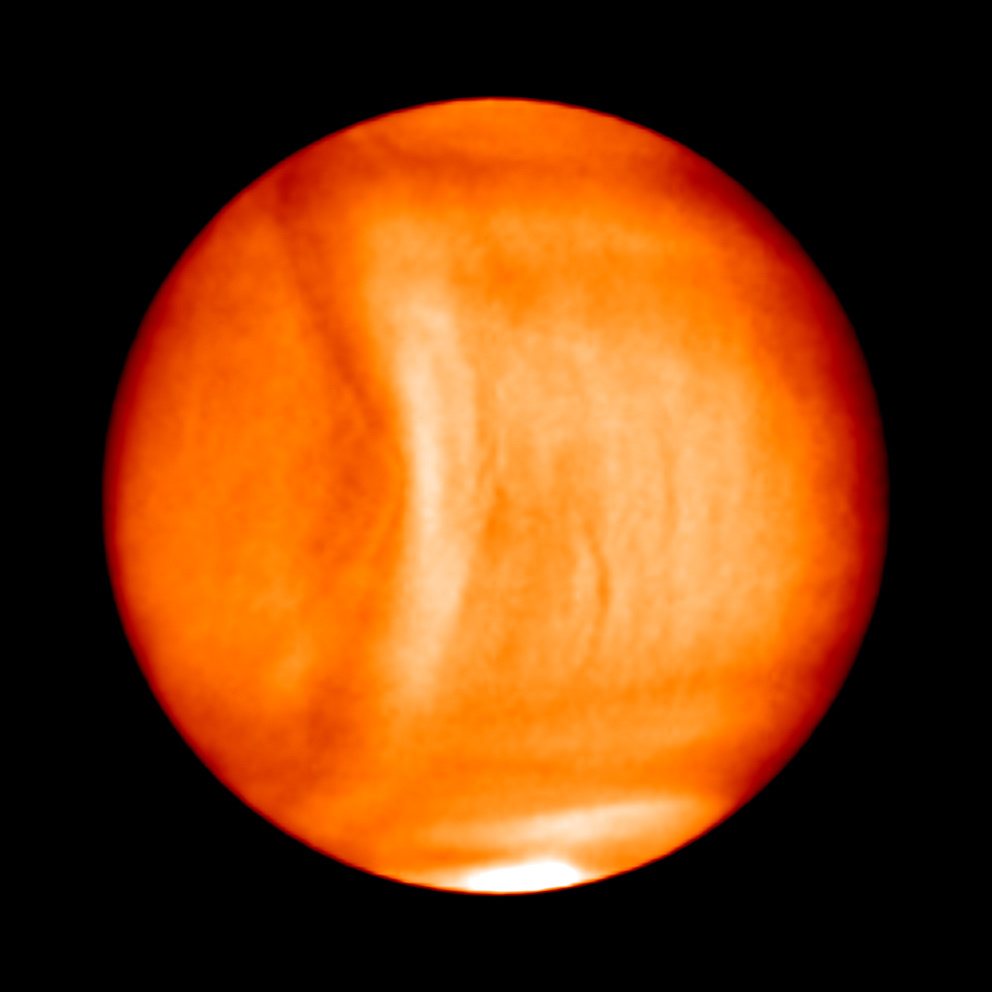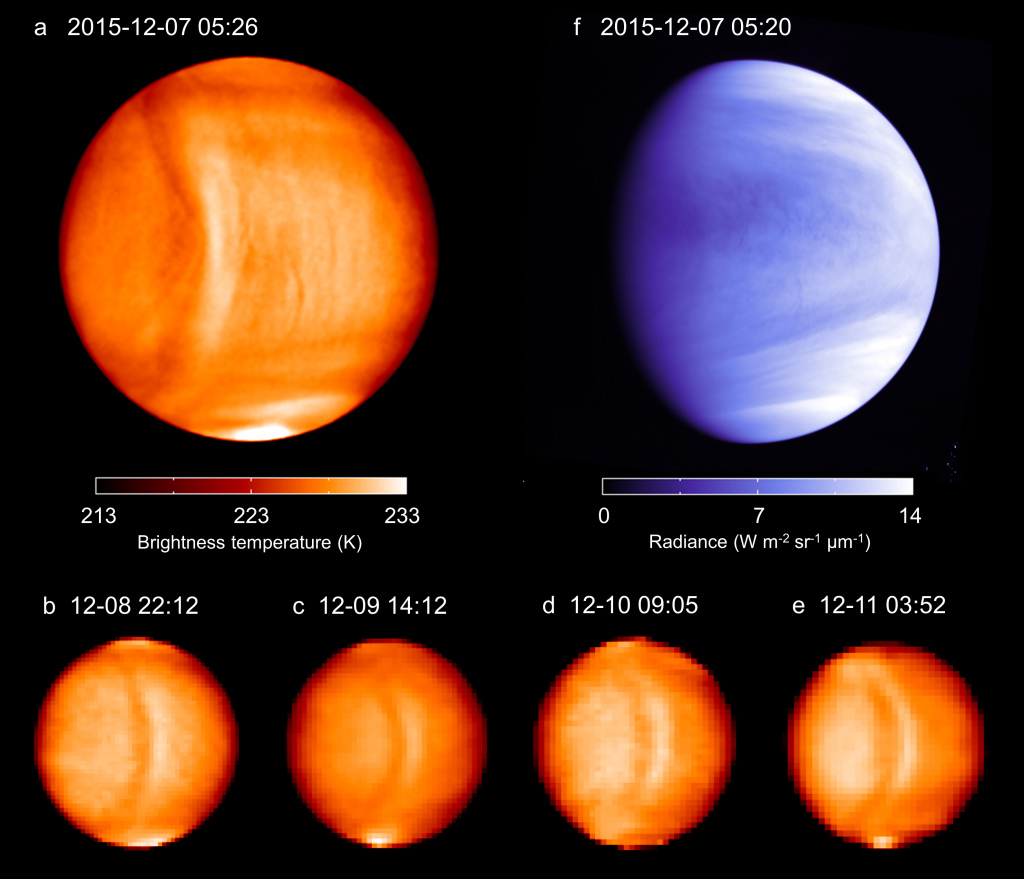Giant Mystery Wave Spotted in Atmosphere of Venus

A huge wave has been spotted in the upper atmosphere of Venus, baffling scientists because it's staying so still above the planet's surface. Usually clouds in that region move at about 100 meters (328 feet) per second, whereas this cloud is stationary compared to the planet's rotation.
New work suggests that the wave was created in the lower atmosphere when it flowed over a mountain, which would be similar to a phenomenon on Earth called a "gravity wave." The feature, related to atmospheric flow over mountains, has nothing to do with the similarly named "gravitational wave," which refers to space-time ripples in the early universe.
"Although it is unclear whether gravity waves induced by mountains can readily propagate upwards to the cloud tops of Venus, the observations suggest that the atmospheric dynamics of Venus are more complex at depth than previously appreciated," the journal Nature's statement on the finding said. [Japan at Venus: Photos from the Akatsuki Spacecraft]
The new findings came from observations by Japan's Akatsuki spacecraft, which has orbited Venus since 2015. The work was detailed yesterday (Jan. 16) in the journal Nature Geoscience, and it was led by Makoto Taguchi at Rikkyo University in Tokyo.
The standstill region is about 10,000 kilometers (6,213 miles) in diameter and hovers over mountains on the planet's surface, shaped like a bow and very bright, the study's authors said. The strange feature was observed by the Japanese Aerospace Exploration Agency's Akatsuki spacecraft, which entered Venus' orbit in late 2015.
Venus has been known for its weird cloud formations for more than 50 years. For example, a large Y-shaped feature was first observed in ultraviolet light; the Mariner 10 spacecraft in 1973 discovered that this feature was also moving independently of clouds in the same region. In 2015, scientists hypothesized it may be created by centrifugal forces, which draw things on a rotating body away from its rotating center, much like a centrifuge.
The European Space Agency also investigated the role of mountains in disturbing Venus' atmosphere in 2016. Based on observations from the now-finished Venus Express mission, scientists found that air filled with water vapor rises up from the lower atmosphere as it moves over the planet's mountains and creates gravity waves.
Breaking space news, the latest updates on rocket launches, skywatching events and more!
"Despite the [similar] name, these have nothing to do with gravitational waves, which are ripples in space-time," Jean-Loup Bertaux, a researcher from the Laboratoire Atmosphères, Milieux, Observations Spatiales in France and the lead author of the European study, said in a 2016 statement.
"Instead, gravity waves are an atmospheric phenomenon we often see in mountainous parts of Earth's surface. Crudely speaking, they form when air ripples over bumpy surfaces. The waves then propagate vertically upwards, growing larger and larger in amplitude until they break just below the cloud top, like sea waves on a shoreline."
Follow Elizabeth Howell @howellspace, or Space.com @Spacedotcom. We're also on Facebook and Google+. Original article on Space.com.

Elizabeth Howell (she/her), Ph.D., was a staff writer in the spaceflight channel between 2022 and 2024 specializing in Canadian space news. She was contributing writer for Space.com for 10 years from 2012 to 2024. Elizabeth's reporting includes multiple exclusives with the White House, leading world coverage about a lost-and-found space tomato on the International Space Station, witnessing five human spaceflight launches on two continents, flying parabolic, working inside a spacesuit, and participating in a simulated Mars mission. Her latest book, "Why Am I Taller?" (ECW Press, 2022) is co-written with astronaut Dave Williams.


